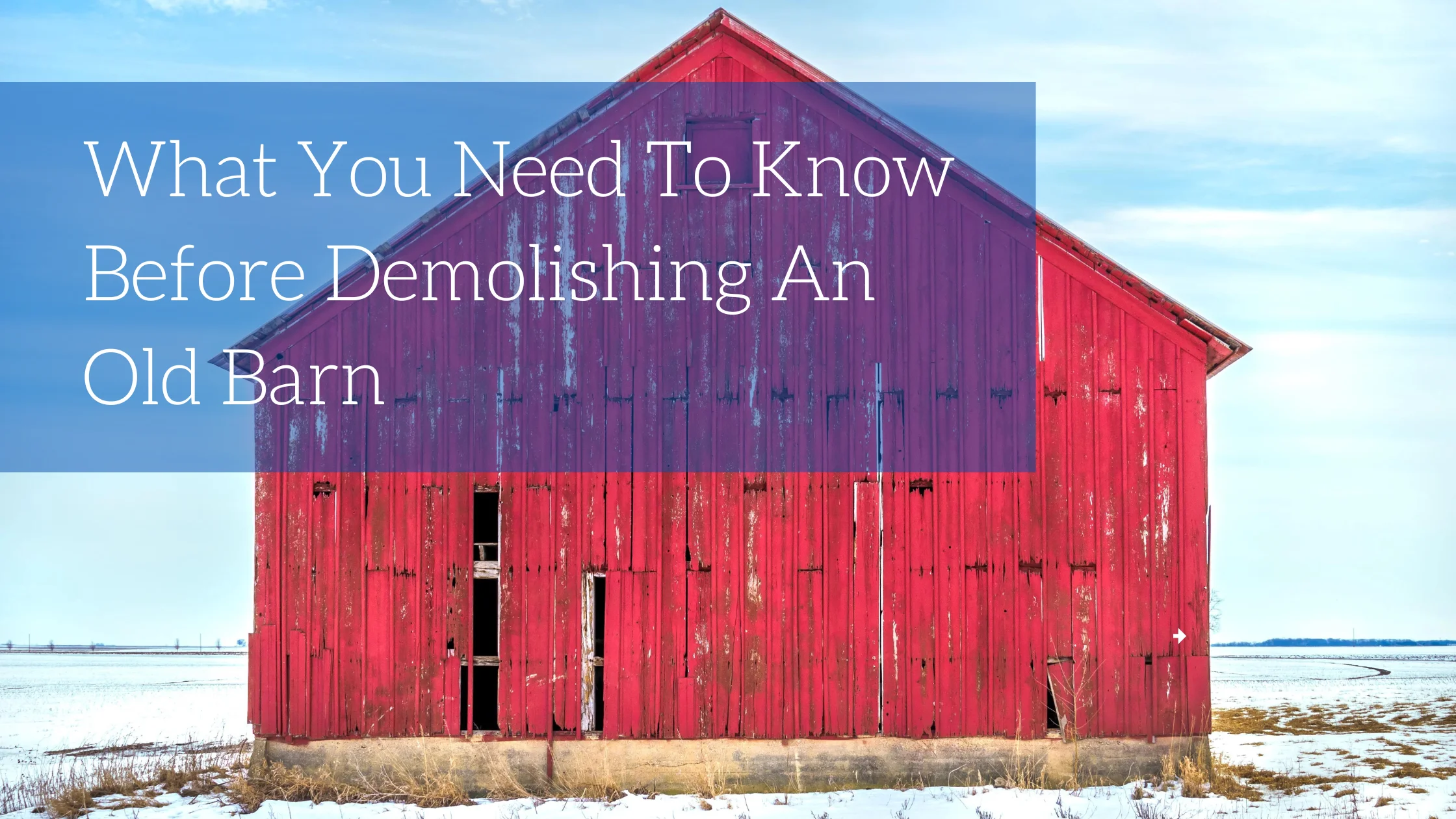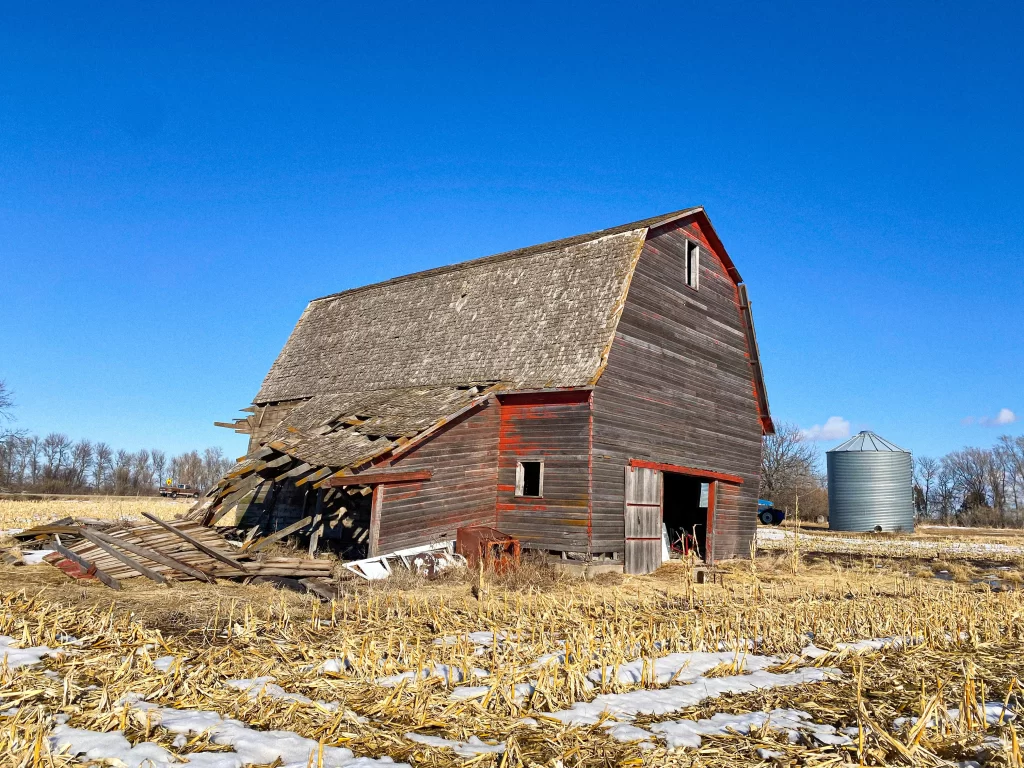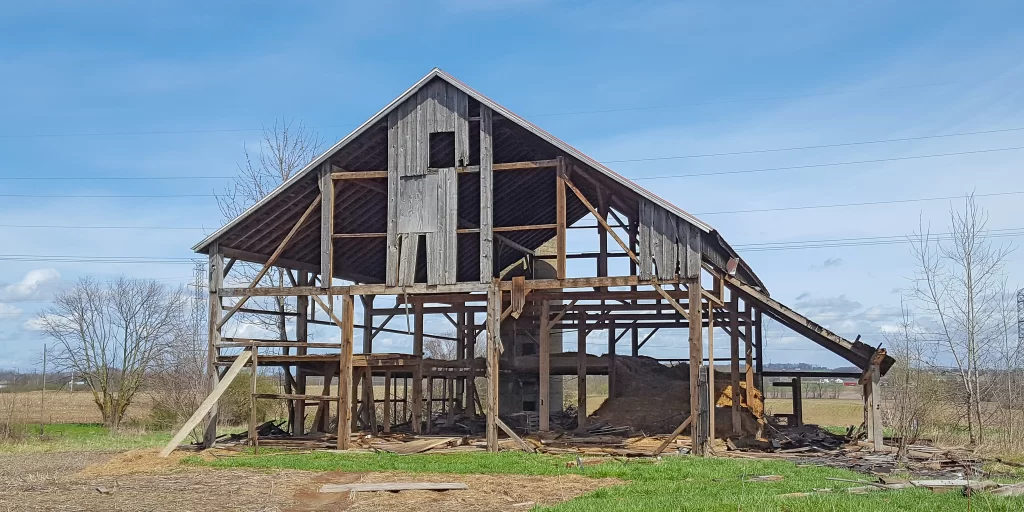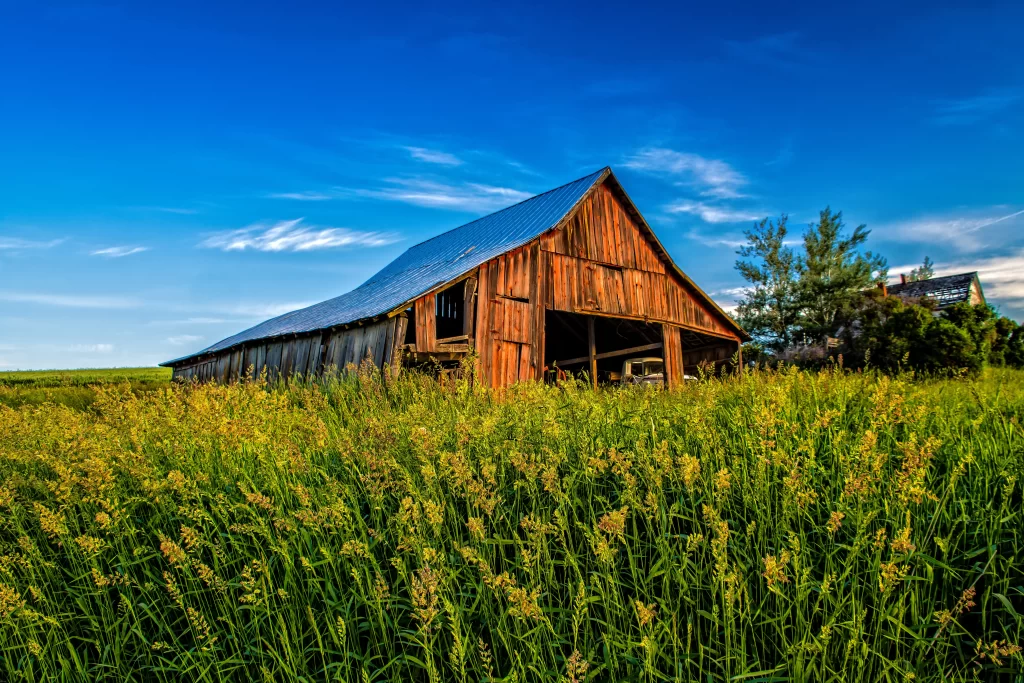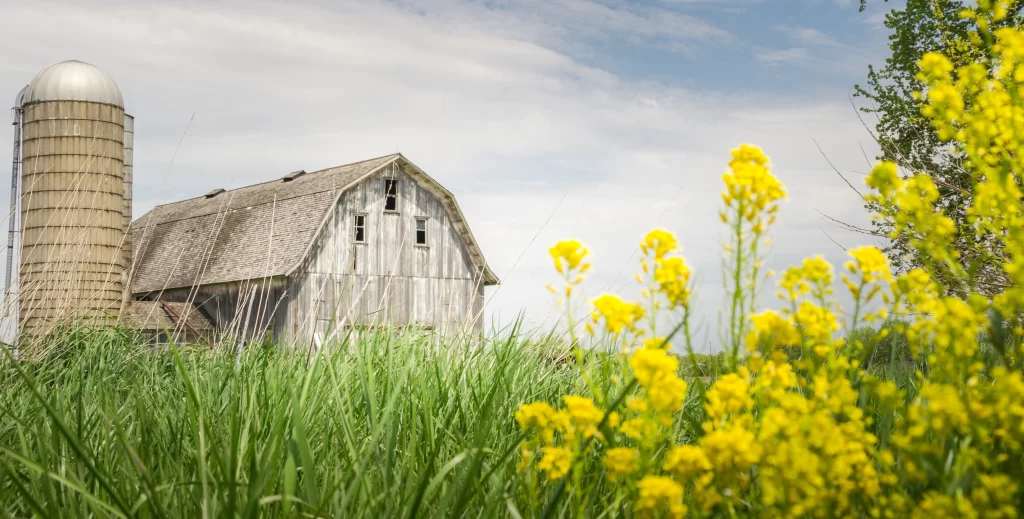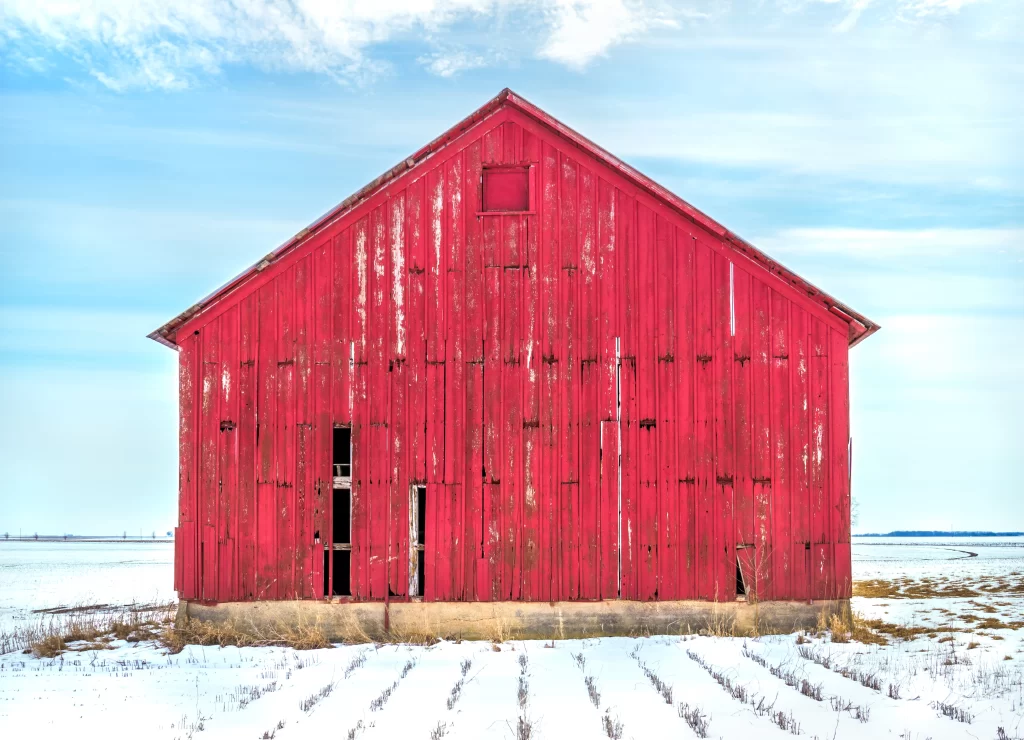Barns have been around for centuries, and while they may seem like antiquated relics of the past, they can still be put to good use.
Old, dilapidated barns have to be demolished at some point. Most farmers and landowners do not look forward to it, but it must be done. Barns are a symbol of our agricultural history and Americana at its finest, so this is not a decision to be taken lightly. This is one of the reasons why hundreds of barns lining our roads are in decay. If you have a barn like this on your property, you might be sitting ona gem, and dismantling it could pay for itself. If you’re thinking about demolishing an old barn, here’s everything you need to know first.
What’s the Difference Between Demolishing and Dismantling?
More often than not, there is little regulation concerning barns. Unless the barn is near a road and presents a threat to the public, the landowner is free to do whatever they wish with it. The barn’s condition can deteriorate to the point that a strong gust of wind might push it over. Unlike homes, most landowners prefer not to repair barns since it can be a costly process.
If a landowner does not want to wait for nature to take its course and wants to remove a barn, they have two options: demolition or dismantling. Demolition is faster, but it leaves nothing to repurpose. Dismantling takes longer, but viable wood can be recovered to be utilized as salvaged wood to construct anything from musical instruments to furniture or flooring.
What’s the Value of Old-Growth Barn Lumber?
This question has no conclusive answer, however:
Be on the lookout for:
- Chestnut, walnut, oak, and old-growth pine are the most expensive and desired wood species.
- Hand-hewn timbers and ax-cut wood are also valuable. Check for ax marks at either end of the timber. Check the full length of the wood for indicators that it was handcrafted.
- Damage, rot, excessive nail holes, and insects all reduce the value of the wood, and some damaged timber is unusable.
The value of the wood cannot be estimated until it is on the ground, but if it is suitable for reclaimed lumber, it might be quite valuable. Reclaimed wood that is over 100 years old can sometimes be sold for multiple times the price of what can be obtained at a home improvement store. This is, of course, dependent on the climate, state, and type of wood.
What is the Cost of Demolishing a Barn?
It is determined by the type of demolition. Total demolition with heavy equipment such as excavators is rapid and could be affordable if you use rented equipment fast and efficiently.
Manually dismantling the barn to recover the old barn wood, on the other hand, is more expensive due to the extra effort and man hours required.
Fortunately, because there are so many demolition businesses out there, the cost of barn deconstruction has decreased in recent years, and there are some firms that specialize solely in barn deconstruction operations.
The cost to remove a barn is between $7,000 and $10,000, depending on location, size of the barn, and a variety of other variables. (1)
Deconstruction can cost twice as much in some circumstances. However, selling salvaged barn wood can cover a large portion of these expenses.
In Which Case Shouldn't You Demolish an Old Barn?
There’s something magical about old barns. They evoke a sense of history and nostalgia, of a time when things were simpler and life moved at a slower pace. However, old barns can also be dangerous and unstable, and there are times when it’s necessary to demolish them. If the barn is located in an area that is prone to earthquakes, for example, it’s important to make sure that it won’t collapse and injure or kill anyone. Similarly, if the barn is infested with termites or other pests, it may be necessary to tear it down to prevent the spread of these pests to other buildings on the property. In short, old barns should only be demolished in cases where there is a clear and present danger to the safety of people or animals. Otherwise, they should be cherished and preserved as a reminder of our agrarian past.
When dismantling an old barn, you can fill two needs with one deed!
And you are a part of the solution if you are thinking about implementing reclaimed wood in your home. You supported a landowner in removing a barn while also helping to save the environment by using salvaged wood. You have a far better product than what you can buy from a hardware store, plus you are giving the wood a new life. It’s a win-win situation for everyone.
So, if you’re considering dismantling your old barn, we hope these tips have helped. If after reading this you’ve concluded you’d like to outsource the dismantling process, contact us to get a free quote with all the details that you need.
- Boyd, Kevin. “Is It Worth It to Tear down an Old Barn? – Aged Woods, Inc.” Aged Woods, Inc., www.agedwoods.com, 3 Apr. 2018, https://www.agedwoods.com/worth-tear-old-barn/.


